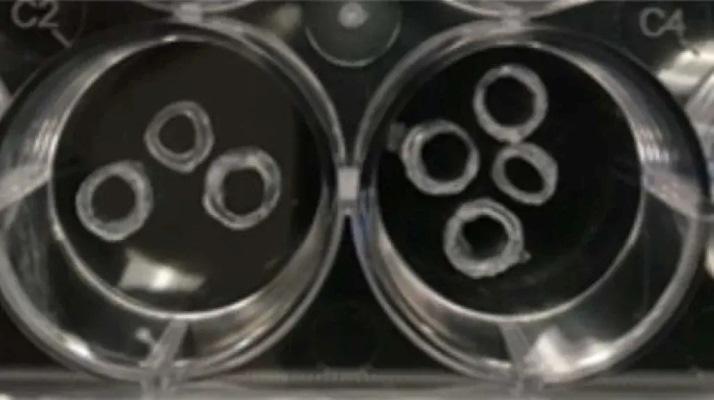Effective soft tissue sealing around dental implants can be maintained by modifying the surfaces of the implants. A research team from the University at Buffalo discovered that strontium supports soft tissue function and therefore developed a customizable strontium-filled scaffold that is designed to improve wound healing and tissue attachment in dental implant treatment.

Strontium, a naturally occurring metal, has been shown to be beneficial in the treatment and prevention of osteoporosis. It has been used to treat dentine hypersensitivity and acts as an anti-plaque and anti-gingivitis agent. Previous research by the university has shown that the metal promotes the activity of fibroblasts, a type of cell responsible for the formation of connective tissue, which plays a critical role in wound healing.
In this study, the research team developed a strontium-filled hydrogel scaffold that can be adapted to any size and shape of an implant neck or healing abutment by creating reusable ring templates and molds. The strontium ions are then released from the scaffold as an initial burst over 24 hours, followed by a constant dosage over four days. According to scientists, this process is associated with minimal toxicity for patients.
The results of the study showed that strontium ions are effectively released from the scaffold, stimulating the activity of gingival fibroblasts and thus promoting wound healing. In addition, tests have shown that the hydrogel scaffold itself has only minimal effect on the tissue.
The authors of the study stated that the strontium-filled scaffold has good biocompatibility and functionality, and also has great potential to accelerate wound healing after implant placement.
“Wound-healing scaffolds have been investigated in bone and skin, but adaptations to the oral cavity are limited,” commented lead author Dr. Michelle Visser, Associate Professor of Oral Biology at the School of university medicine. “These new scaffolds provide a system for efficient oral strontium release,” she added.
